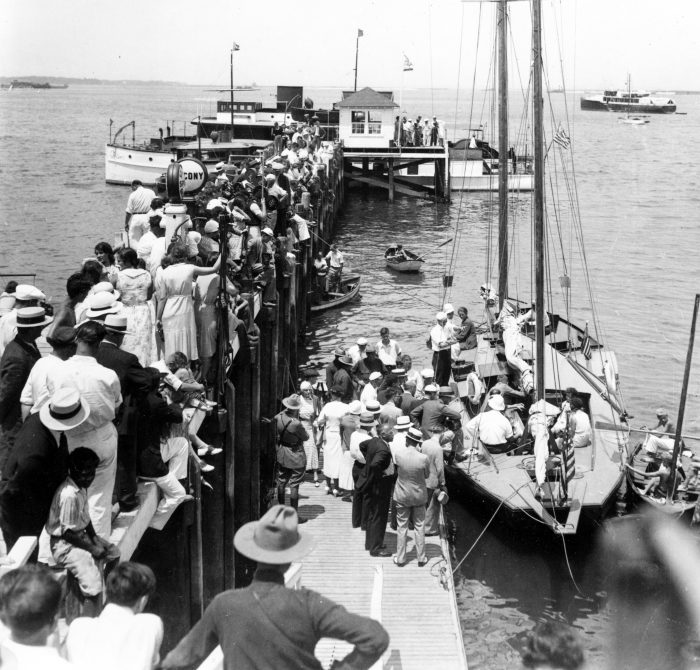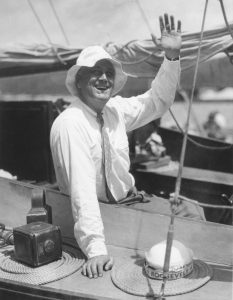Hometown History: FDR sets sail for the White House — Port Jefferson and the 1932 presidential campaign

Franklin D. Roosevelt launched his 1932 campaign for president of the United States by sailing from Port Jefferson across Long Island Sound into New England coastal waters.
Roosevelt had accepted the Democratic presidential nomination on July 2, 1932, at the party’s convention in Chicago.
Returning to New York where he was governor, FDR announced he would be going on a week’s cruise with his sons and departing from a secret Long Island location, later revealed as Port Jefferson.
Escorted by state troopers, Roosevelt motored from his home in Manhattan to Port Jefferson, arriving in the village around noon on July 11, 1932.
As seaplanes roared overhead, FDR was greeted by the tooting of boat whistles, screeching of car horns and the cheers of the hundreds who had lined Water Street (East Broadway).
Roosevelt made his way to Bayles Landing and boarded the Myth II, a 37-foot yawl rented for the trip from Prescott B. Huntington of St. James, New York.
Offering sleeping accommodations for six and a galley with a two-burner range, the unpretentious vessel had a black hull, orange deck and white cabin. With no auxiliary engine, the Myth II was solely dependent on her three sails for power.
Before casting off, FDR chatted with two local boys, Randall Woodard and Gilbert Kinner, who would become instant celebrities in Port Jefferson when they appeared in dockside photos and newsreels with the presidential nominee.

Photo from the Kenneth C. Brady Digital Archive
Getting underway, a launch captained by E. Post Bayles pulled the Myth II into the choppy waters of Long Island Sound where the tow was parted, and the yawl caught the wind.
At the helm, Roosevelt laid a course for Connecticut, backed by a crew of three of his four sons, as well as friend George Briggs, who kept the ship’s log.
The luxury yacht Ambassadress, chartered by FDR’s supporters and advisers, and the motor yacht Marcon, packed with newspapermen covering Roosevelt’s voyage, followed in the Myth II’s wake.
Ostensibly, the vacation cruise was to provide FDR with rest and relaxation before beginning his campaign for president, but the trip was more about politics than recreation.
Roosevelt anchored at several ports during his “holiday” including New Haven, Connecticut; Marblehead, Massachusetts; and Portsmouth, New Hampshire.
At these locations, FDR worked to bring dissident Democrats into the fold, meeting with political leaders from New England who had supported former New York State Governor Alfred E. Smith as the party’s presidential nominee.
During each stop, political heavyweights attended strategy sessions aboard the Ambassadress and Roosevelt held daily press conferences with the reporters tagging along on the Marcon.
A victory for the Democrats, the extensively photographed cruise showed Roosevelt as a vigorous leader who was prepared to command the “Ship of State” as well as he captained the Myth II, countering claims that FDR was a helpless invalid crippled by polio.
Roosevelt would go on to defeat Republican candidate and incumbent President Herbert Hoover in the Nov. 8, 1932 election, marking the end of a campaign that began on a summer day aboard a sailboat in Port Jefferson Harbor.
Kenneth Brady has served as the Port Jefferson Village Historian and president of the Port Jefferson Conservancy, as well as on the boards of the Suffolk County Historical Society, Greater Port Jefferson Arts Council and Port Jefferson Historical Society. He is a longtime resident of Port Jefferson.






